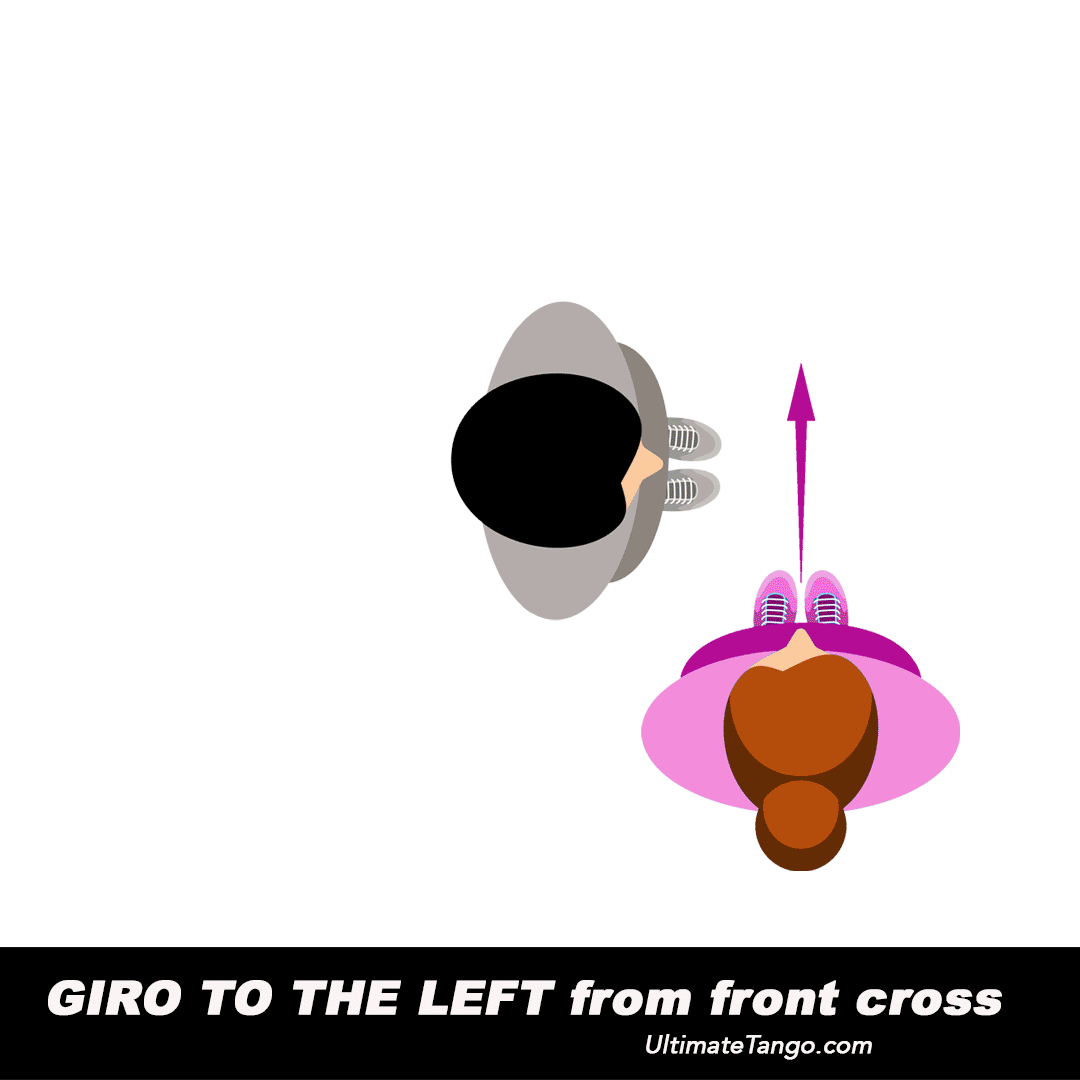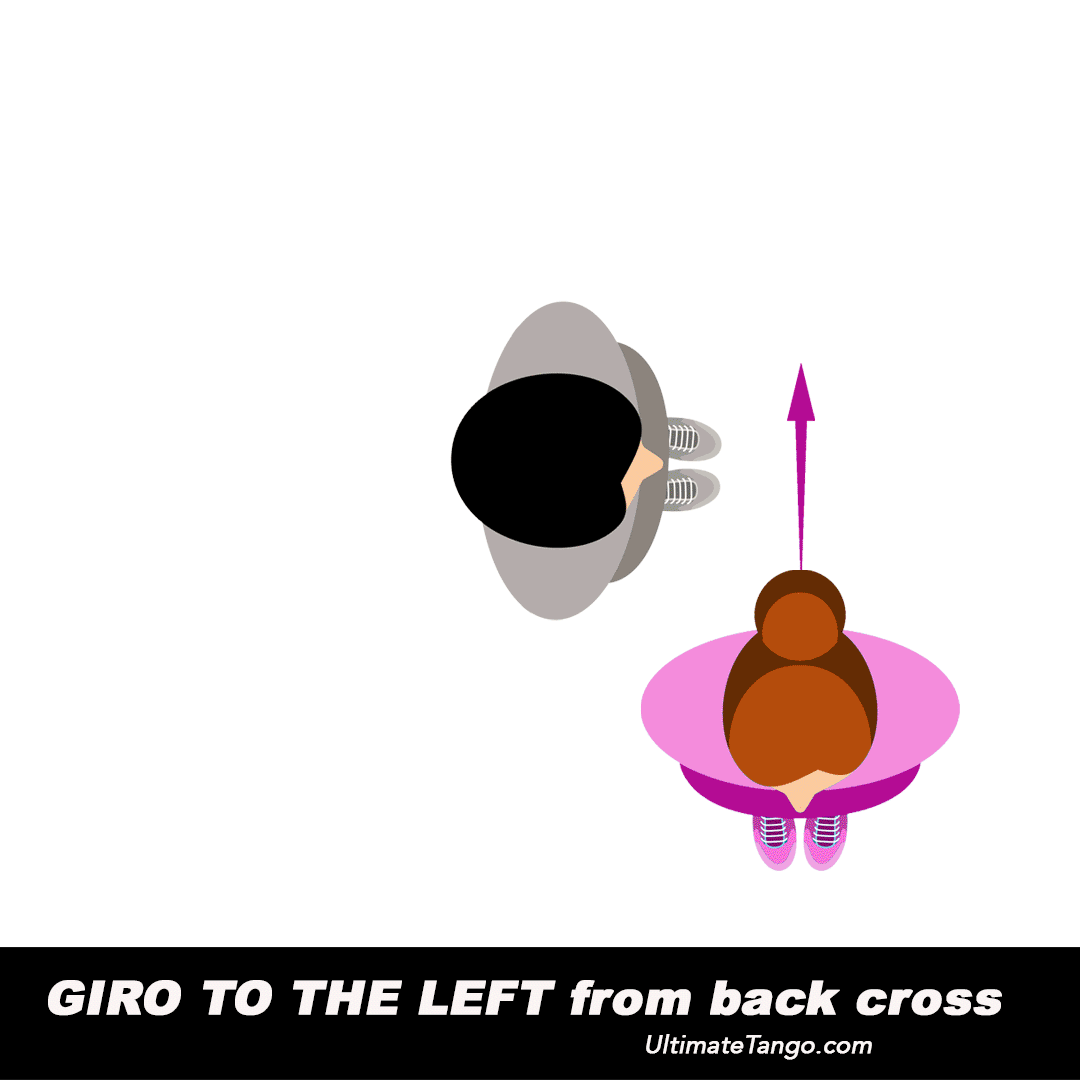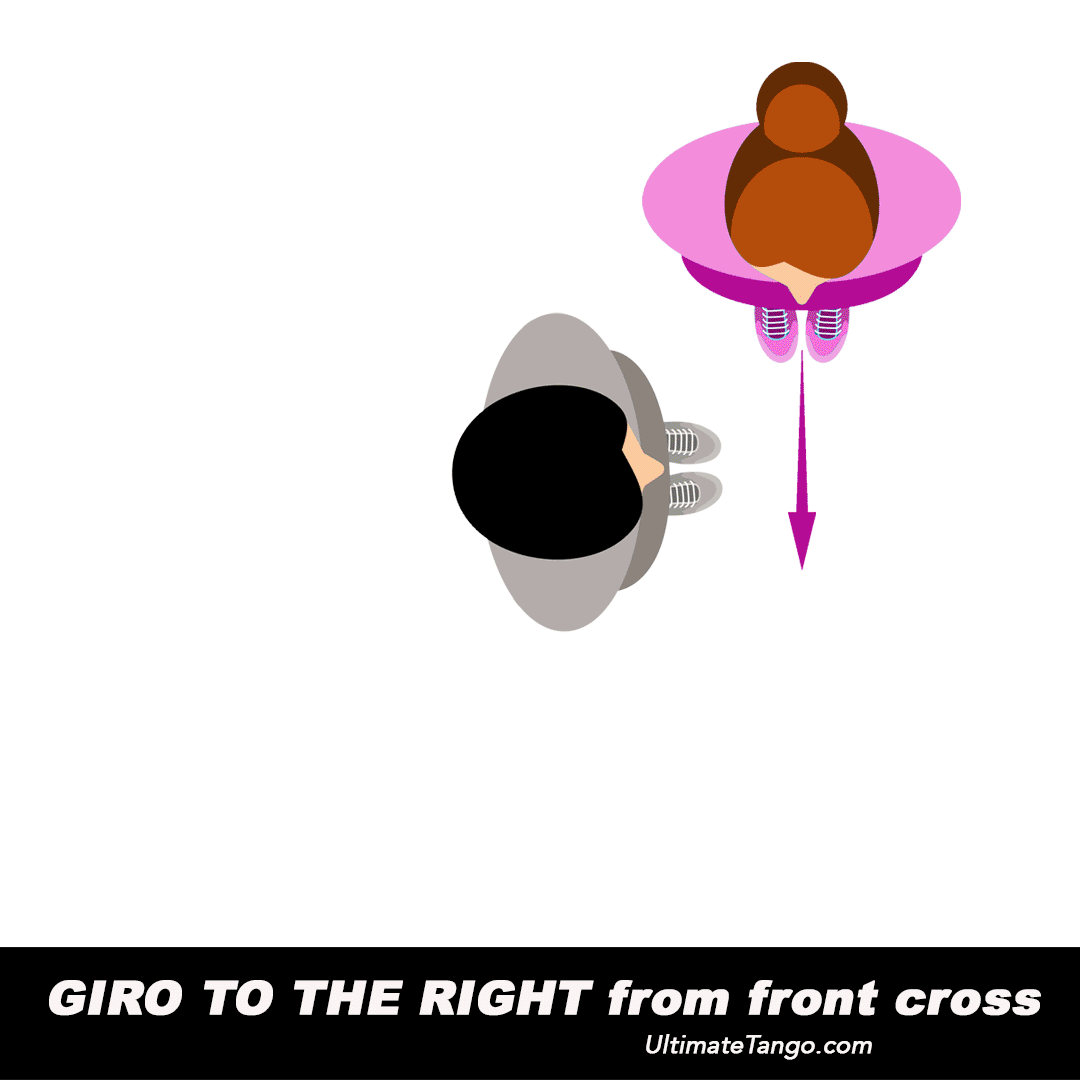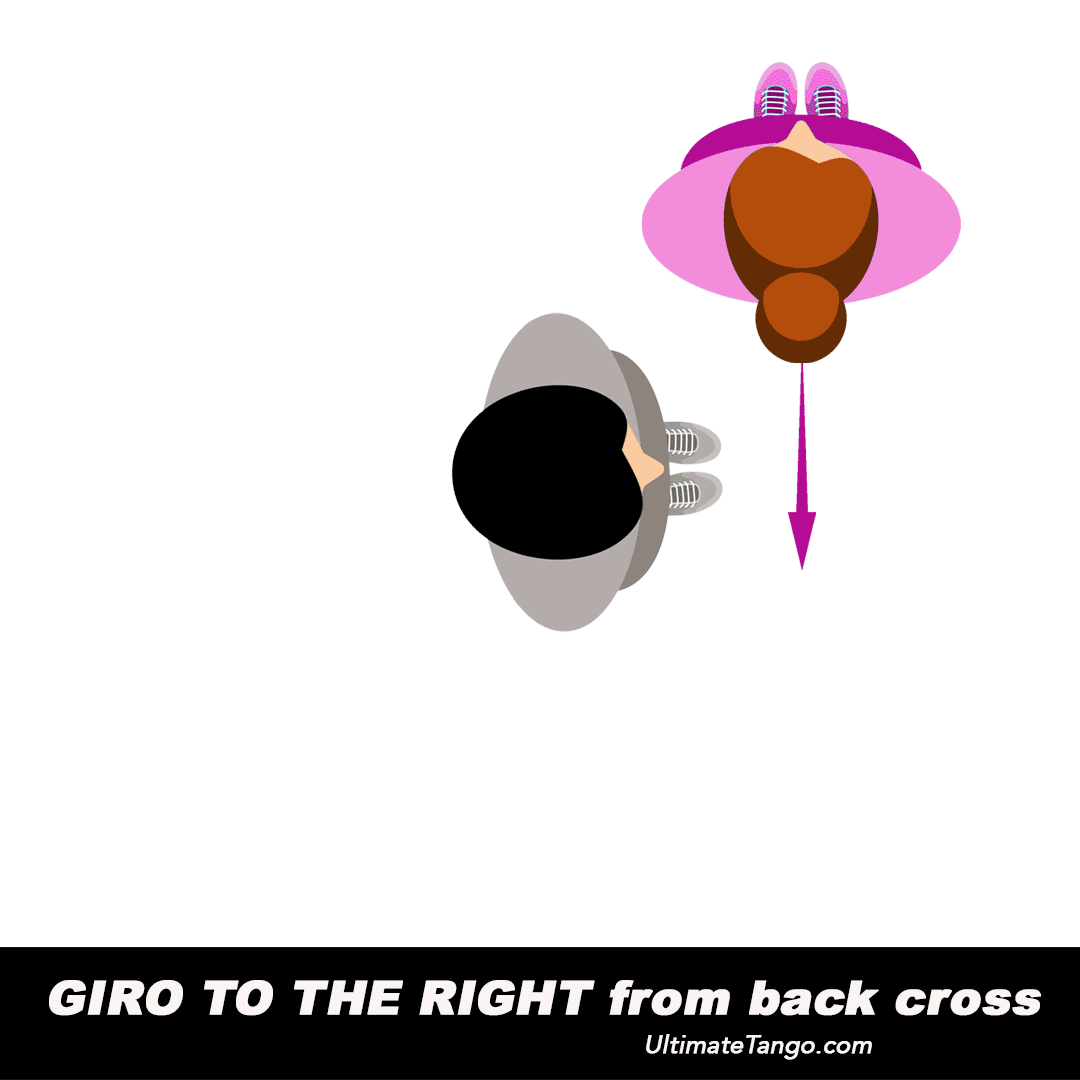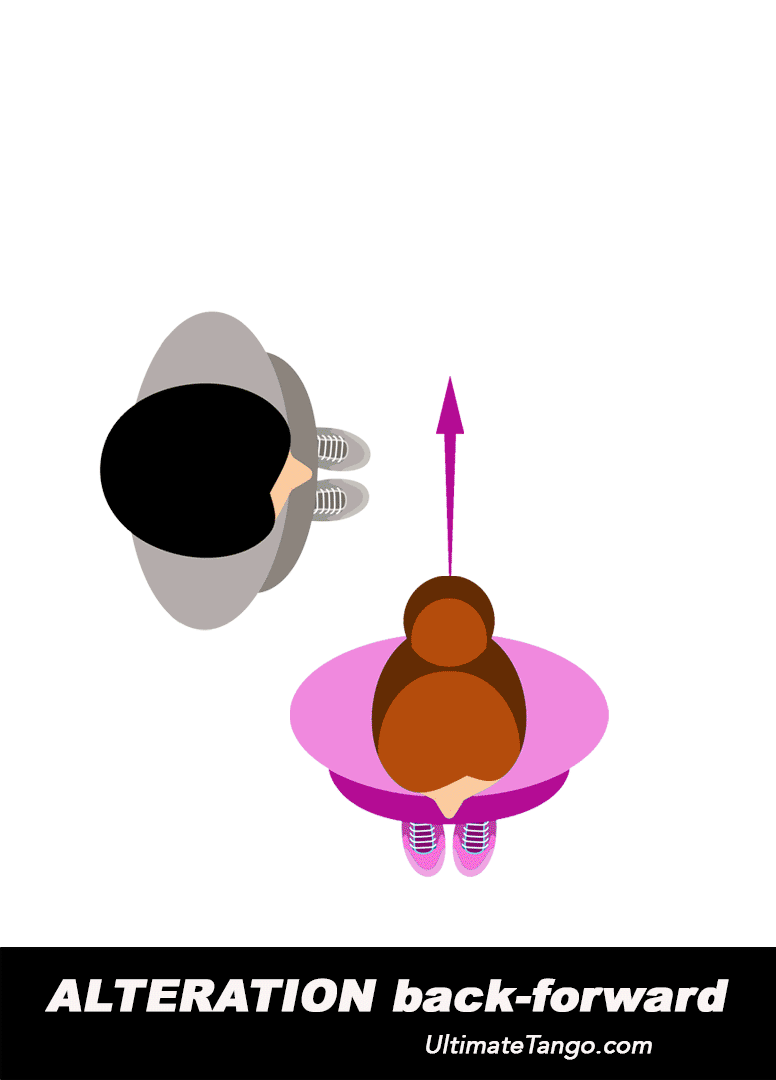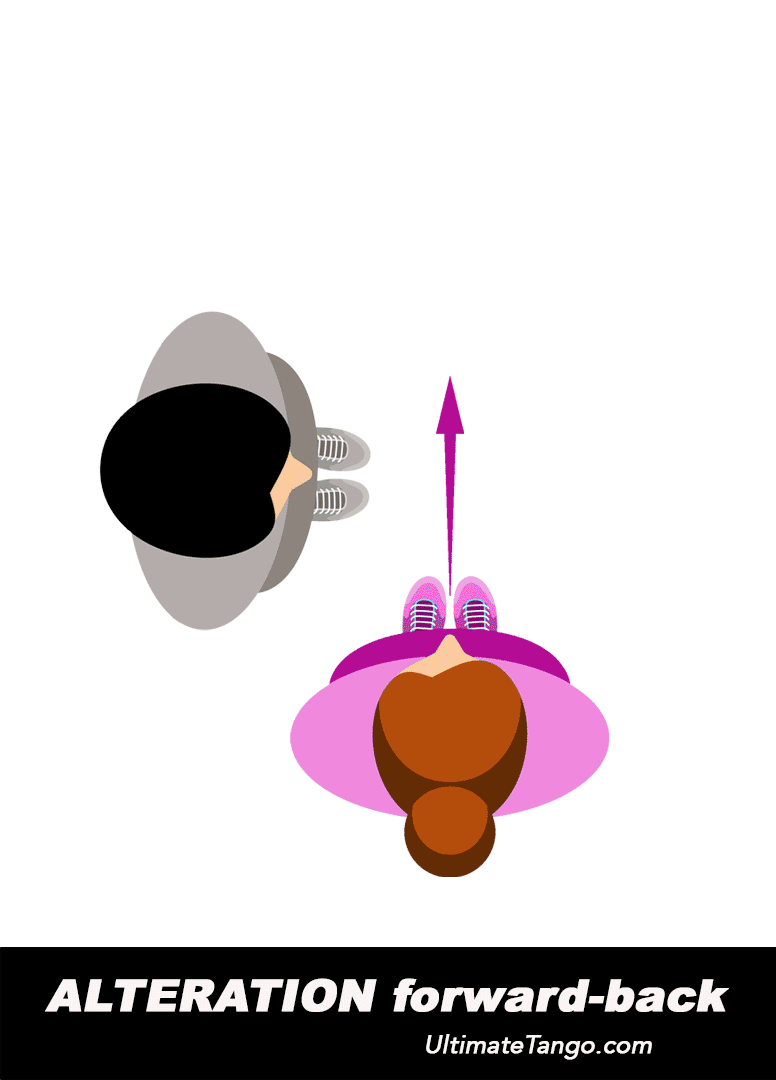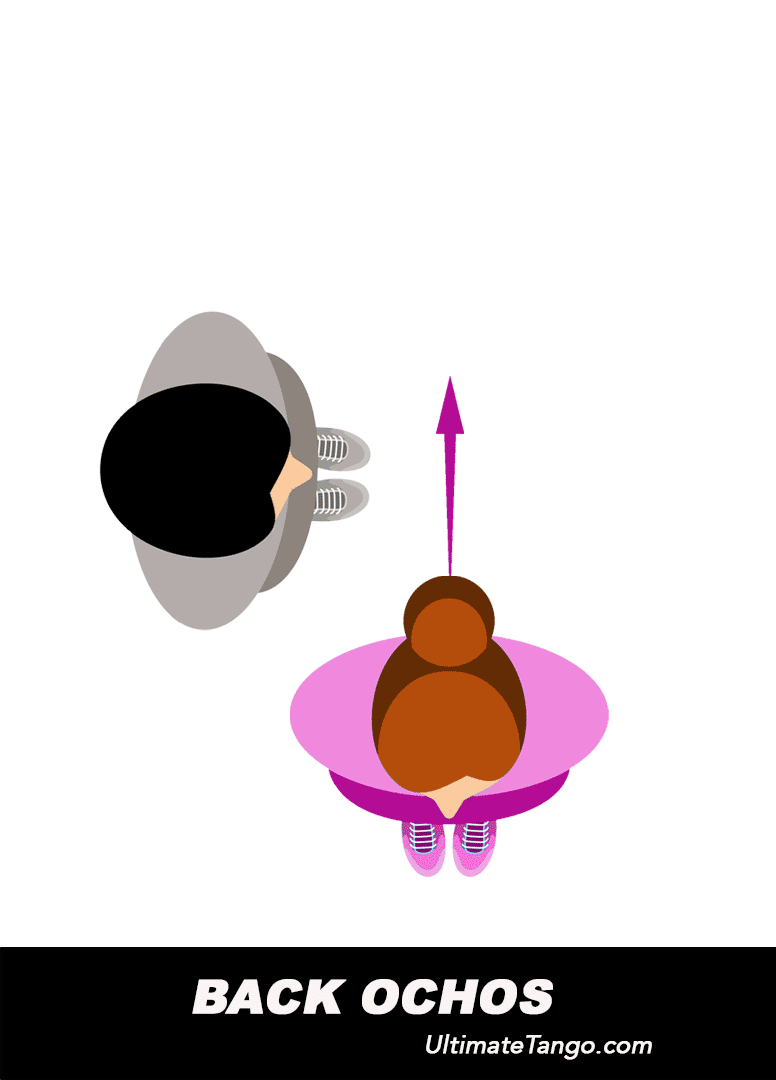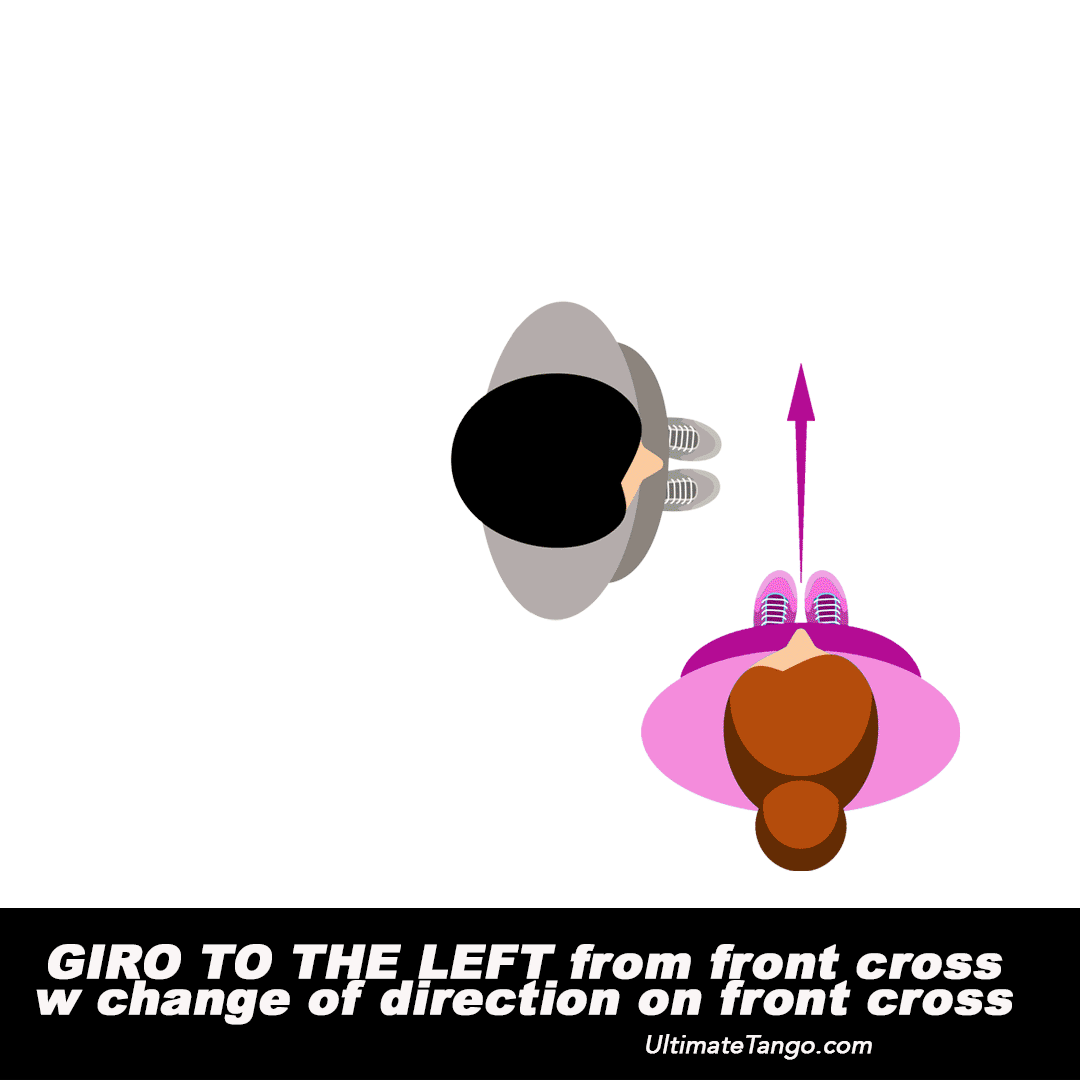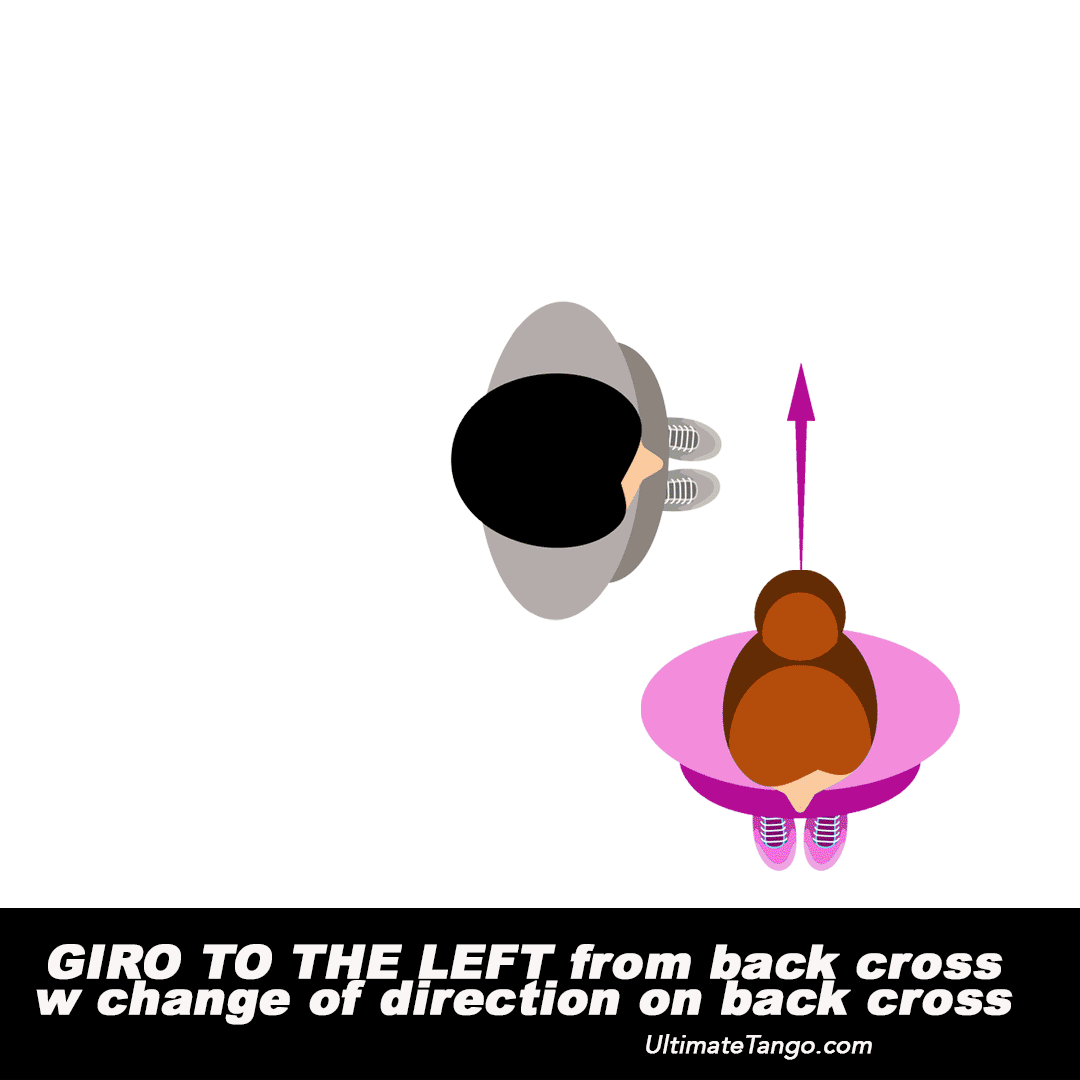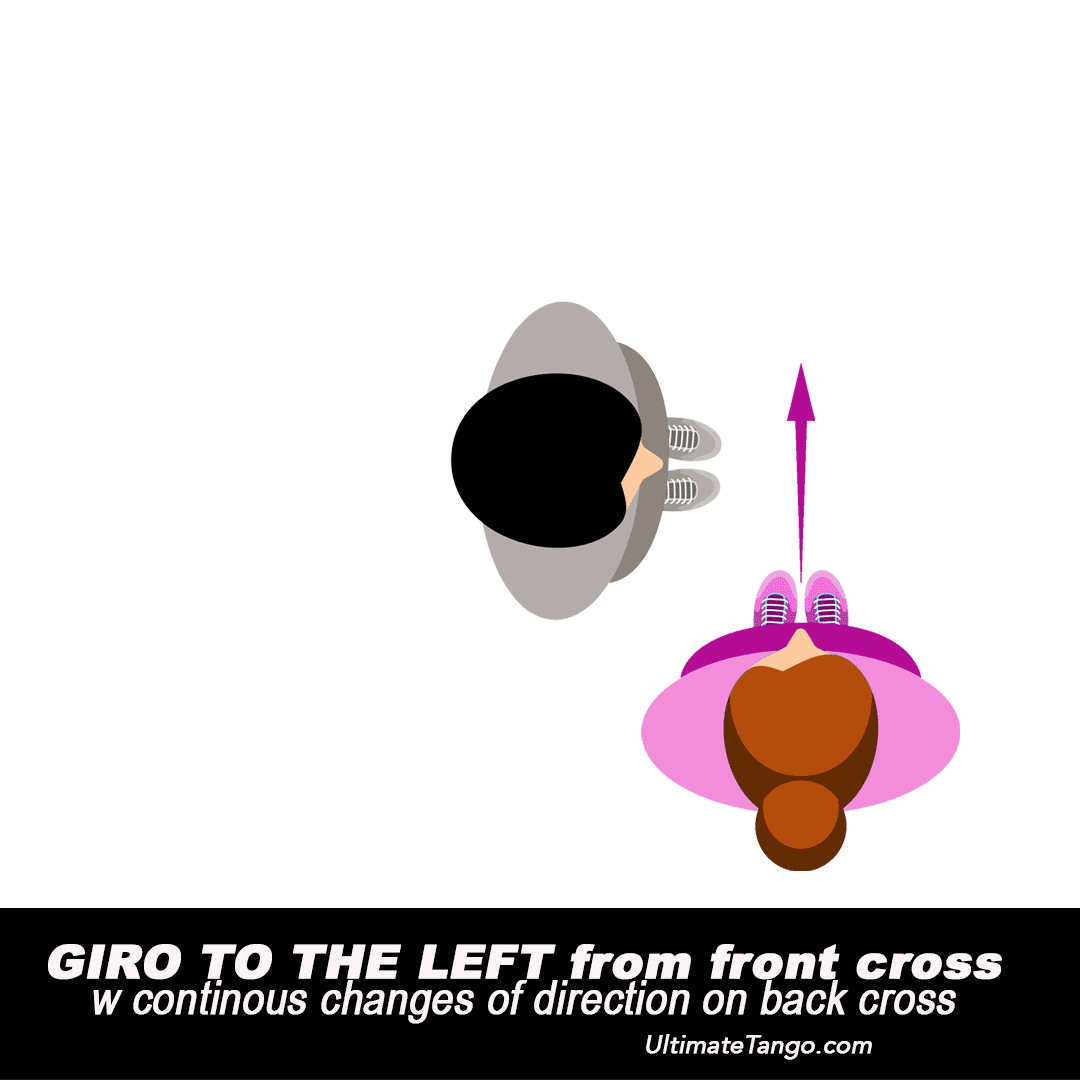Cross, ocho and change of direction – if you associate it with Gordian knot you might be right!
When you finally get to learn the ochos in Argentine tango it seems like a huge victory. You get to understand that they are happening (as one of the versions) in a cross-system.
You learn that there is a cross position an open position and it all relates to where the partner is placed. You also get to know that ochos are more mostly executed by the follower and led by the leader, although the other version around is possible too.
You get to know that when the follower is executing crosses forward it’s called ocho forward or front ocho. And when the follower is going back - it's called back ocho, or backward ocho. You are able to enter an exit from the ochos and that becomes your go-to figure. Now you really know how to dance the Argentine tango and then… this happens…
One day, according to ancient Greek legend, a poor peasant called Gordius arrived with his wife in a public square of Phrygia in an ox cart. As chance would have it, so the legend continues, an oracle had previously informed the populace that their future king would come into town riding in a wagon. Seeing Gordius, therefore, the people made him king. In gratitude, Gordius dedicated his ox cart to Zeus, tying it up with a highly intricate knot - - the Gordian knot. Another oracle -- or maybe the same one, the legend is not specific, but oracles are plentiful in Greek mythology -- foretold that the person who untied the knot would rule all of Asia.
The problem of untying the Gordian knot resisted all attempted solutions until the year 333 B.C., when Alexander the Great -- not known for his lack of ambition when it came to ruling Asia -- cut through it with a sword. "Cheat!" you might cry. And although you might have been unwise to have pointed it out in Alexander's presence, his method did seem to go against the spirit of the problem. Surely, the challenge was to solve the puzzle solely by manipulating the knot, not by cutting it.
All ochos are crosses, but NOT all crosses are ochos
Then your teacher surprises you with this statement: ‘all ochos are crosses but not all crosses are ochos’. What's going on in here?!?
‘Ocho’ translates into ‘eight’ so the figure shall somehow resemble the eight-shape. In fact, it looks more like an Infinity sign. Thus, if you analyze the ocho by simply drawing it on the paper, it requires two directions. Since one step goes towards one direction, we need another step going the opposite direction, to complete the 8-shape.
Ocho is the unique motion of tango; the shape of the path that the foot traces during the ocho is a number 8 (Fig. 1) [8]. In the case of ocho adelante and ocho atras, the two consecutive motions make the shape of an 8. First, the tango-specific pivot occurs in ocho. The process for executing the tango pivot is unique though it uses natural movements. READ FULL ARTICLE AND MEDICAL RESEARCH HERE.
Therefore, to execute one ocho, one requires 2 steps going in the opposite directions. In order to achieve the effect of crossing in the middle (just like figure 8 does) – the two steps need to be crosses (forward crosses or back crosses).
It does not really matter if the ocho goes forward or backward. The rule still applies - to make one ocho we need two forward crosses or two back-crosses.
Of course, as a mental shortcut, we often say ocho, ocho, ocho, ocho - meaning forward cross, forward cross, forward cross, forward cross, It's all fine as long as you know what you are referring to.
Analyzing the ochos from the perspective of two steps going in the opposite direction, and relationship to the partner, we can observe another interesting aspect. In reference to the partner, one of the crosses travels to the left and the second cross travels to the right. if we continue with our ochos, we’ll continue doing one of the steps traveling to the left in the relationship to the partner, and one step traveling to the right in the relationship to the partner.
The leader, being usually more stationery, can be perceiving the follower as traveling to the left of him, and to the right of him. That's why, very often, when you ask a beginner leader about what is the ocho, he simply starts doing sidesteps, because those sidesteps - going to the left and to the right - are what accompany the movement of the follower.
Ocho equals a change of direction
if you continue thinking about ochos as the steps traveling to the left of the leader and to the right of the leader, it is clearly visible that each of the crosses embedded into the ocho becomes the change of direction. With every step, you start your journey in the opposite direction than you traveled previously. The continuous ochos become a permanent change of direction.
Molinete and giro – what is what
Sometimes the terms molinete and giro are used exchangeable, as though they were meaning the same thing. But, to be more precise, the Spanish word giro (pronounced ‘hero’) means a turn, to be more specific, a turn of a couple. It can be any turn. Meaning any setup or any arrangement between the leader and follower can create a turn or a giro.
However, in tango, it is very common, that a leader remains the center of the turn, anchored in the middle, and the follower travels around him, executing a very specific set of steps.
This set of steps is called molinete and sometimes referred to as the code of walking.
Why molinete works the way it works is a separate story, and we're going to talk about it at a later time, but what you need to remember to have any kind of understating of tango structure, or to be able to have a discussion, is that
the molinete is like a mantra of tango. Or a DNA chain. The repetitive sequence of 4 steps. You have to know it, you have to remember it, regardless if you are a leader or a follower.
Molinete translates into the windmill. You can easily imagine a windmill with 4 wings. Depending on which direction the wind is blowing, the wings are turning continuously in that specific direction. If the direction of the wind changes - the wings are changing direction too. Exactly the same for the molinete. Although it is the Leader who takes on the role of the wind so the change becomes slightly more predictable.
As we said the molinete pattern consists of four steps: forward - side - back - side.
In case of the giro, those steps will be traveling around the leader.
Because the 4 steps continue to repeat, at some point we no longer can differentiate, what was the starting point. We just see the repetitive pattern.
forward - side - back - side - forward - side - back - side - forward - side - back - side - forward - side - back - side - forward - side - back - side - forward - side - back - side - forward - side - back - side - forward - side - back - side - forward - side - back - side -
4 starting possibilities
Because there are four steps, we have 4 starting possibilities:
forward - side - back - side - forward - side - back - side - forward - side - back - side
side - back - side - forward - side - forward - side - back - side - forward - side - back
back - side - forward - side - back - side - forward - side - back - side - forward - side
side - forward - side - back - side - forward - side - back - side - forward - side - back
Notice one thing, which is not so crucial right now, for the purpose of our current discussion, but it will be essential for your later tango development and understanding how the structure of the dance functions - the sidestep after the forward step IS NOT the same as the sidestep after the back step. DO NOT ignore the importance of this discovery!
Change of direction
It is clear that the steps keep the same repetitive pattern and that we are traveling in the same direction in reference to our partner. The change of direction happens when we are reversing the current direction. Still, we are referencing our partner.
The change of direction does not mean changing the way you are going in reference to the room. It also does not refer to the couple as a unit. It refers strictly to one partner changing the direction of traveling in reference to the other partner.
There are two ways of achieving this goal:
Through the alteration (modified change of direction that happens by retracing the original step, e.g. forward to back or back to forward)
Through the change of direction (reversing the original cross e.g. forward to forward, or back to back)
Change of direction is achieved when we are using the same exact type of step. That brings us back to the ochos that we were discussing at the beginning. Each ocho consists of two crosses. Each cross travels in the opposite direction. That means, when we are changing the direction, we can transit one forward cross going to the left, into one forward cross going to the right. Similarly - we can transition from back-cross going to the left into back-cross going to the right.
Applying change of direction in the giro
Although learning the giro already seems to be difficult, modifying the giro by changing its direction, is taking you to the next level of conversational tango, as it is one of the most basic structural elements, danced all over the world.
Let’s do some math. If the molinete has 4 steps and those steps keep repeating. We can observe that step #5 is exactly the same as step #1. That means, that regardless of which step we had started with (forward cross or back cross) on step #5 we will hit the exact same step. In other words – we had completed one full giro and we are about to start the next one.
This is the perfect point to change the direction, using, what we just discussed - the same step but going the opposite direction. If we started from the forward cross (step #1), step #5 will also be a forward cross. Therefore, we can change the direction using the forward cross to forward cross approach.
Translation? In tango language it will be stated as – giro to the left (or right) from forward cross with change of direction on forward cross. Sounds impressive – but now you know, it really is not that difficult.
The same exact thing will happen if you start the turn from the back cross. Step #1 will be a backcross, and step #5 will be a back cross. Therefore, you can change the direction through the back-crosses on step #5.
The number of crosses DO matter
Remember the fable about Little Jhonny who traveled along the long road? In order not to forget which way he supposed to head to the next morning, before falling asleep he would stretch his legs in the direction he supposed to continue when he wakes up the next morning.
Same here!
It is very important to control how many crosses you introduce at the change of direction point! After adding step #5 and pivot to the current direction (one additional cross on top of the original 4 steps), you certainly going to go the opposite way – which is what you want (or what your teacher wants).
What if we start multiplying?
Any uneven number of added crosses (after the original 4 steps) – will keep your eyes on the new direction. Any even number crosses (after the original 4 steps) – will get you back toward the original direction.
Where is the next exit?
The next exit or the next opportunity to change the direction is on the next cross, step #7, which is equal to the original step #3.
forward - side - back - side - forward - side - back - side - forward - side - back – side
If you missed (or strategically resigned) from the first opportunity, you can now change direction on the next cross. That makes you look like a Very Advanced Dancer.
For instance – you had started the giro with the forward cross, but you changed the direction on the back cross. Conversely - you had started the giro with the back cross, but you changed the direction on the forward cross.
If you observe this gif carefully
(I did slow it down and it will eventually stop)
It starts with FORWARD CROSS, does one and a half turn (6 steps, and on step #7 changes the direction through the BACK CROSS. Then continues with the full giro until again the BACK CROSS is reached, and the direction changes again and onto the full giro.
The 3rd step
To confuse you a little bit at the end so you have a good reason to come back, let’s add one clarification. So far, we were analyzing our possibilities of changing the direction with the assumption that we want to complete the initial giro (4 steps).
But what if we wanted to change the direction in the middle of the giro? Or just add a couple of oscillating crosses to give our partner a chance to showcase her pivots.
Or introduce some ‘thinking ochos’, as one of our students, Russel, calls them since he discovered that leading the ochos gives Leader a chance to think what to do next. Totally possible! If you started with a forward cross – the next upcoming cross is the back one – and you can change the direction right there – on step #3!


![Ocho is the unique motion of tango; the shape of the path that the foot traces during the ocho is a number 8 (Fig. 1) [8]. In the case of ocho adelante and ocho atras, the two consecutive motions make the shape of an 8. First, the tango-specific piv…](https://images.squarespace-cdn.com/content/v1/5d8526e4f73668483f296428/1614975421898-16WH185QW3Z4IR2Q748Z/Ocho-Ocho-is-the-unique-motion-of-tango-that-is-in-the-shape-of-the-number-8.png)



